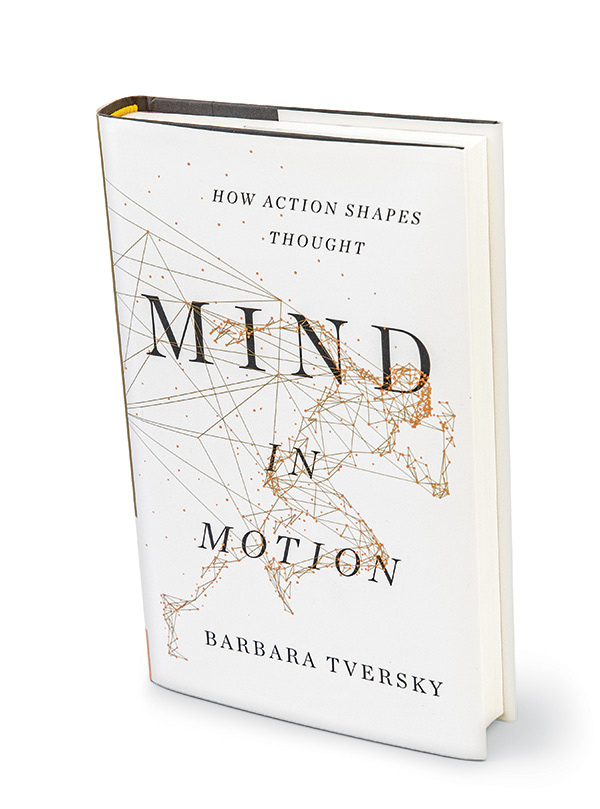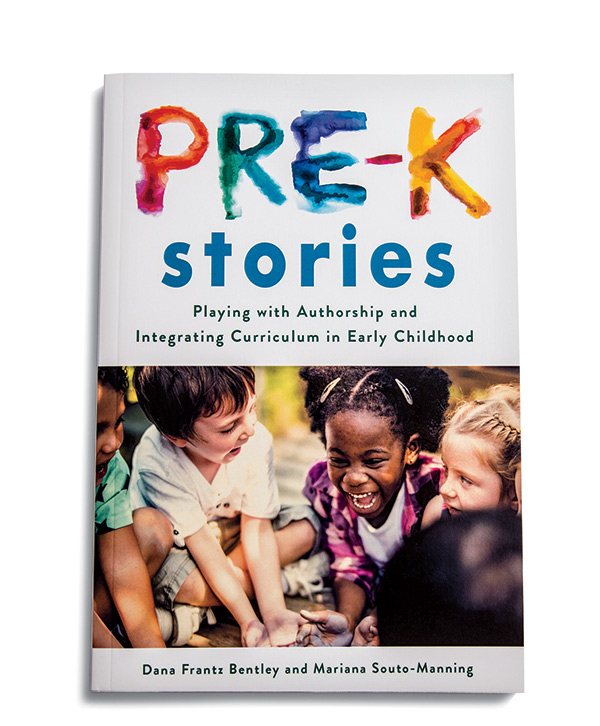Moving Prose
Barbara Tversky on why actions speak louder than words
What are thoughts made of? Not words, asserts Barbara Tversky, Professor of Psychology & Education, in Mind in Motion: How Action Shapes Thought (Basic Books 2019). Rather, spatial cognition enables us to draw meaning from our bodies, surroundings and actions — and actions underlie language’s structure and meaning.

Tversky says spatial cognition enables us to draw meaning from our bodies, surroundings and actions, which underlie language. (Photo: Deborah Feingold)
Mind in Motion “upends everything most of us think we know about thinking,” says “Think Again” podcast host Jason Gots. Nature says the book transports us from “the ‘world in the mind’ to the ‘mind in the world.’” And the Wall Street Journal’s takeaway is that “the fact that our brains are in bodies shapes how they think.”
Education, too, must recognize that visuals, from diagrams to comic books, communicate more directly than symbolic words. “The naming game with babies itself depends on joint attention and gesture,” Tversky argues. “There’s so much more to say, but that would be another book.” —Joe Levine
“A” is for “Agency”
Seeing preschoolers as authors

Souto-Manning mentored a pre-K teacher who guided her students in editing recorded narratives based on their daily play. (Photo: Bill Cardoni)
They weren’t yet reading books fluently, let alone contemplating publishing them. Yet the children of the Pre-K East classroom in Cambridge, Massachusetts, became authors. Pre-K Stories: Playing with Authorship and Integrating Curriculum in Early Childhood (Teachers College Press 2019), by their teacher, Dana Frantz Bentley, and her mentor, Mariana Souto-Manning, TC Professor of Early Childhood Education, describes how Bentley helped the children edit recorded narratives based on their daily play and create “really real” (OK, some were typed and stapled) volumes: The Whole Pre-K East Book (stories with drawings); The Book of Paper Airplane Experts (a how-to, with photos); A Book of Family Shares (families’ stories of the children’s homelives); All of the Seasons Square: A Season World (poetry accompanying the children’s classroom mural); and The Pre-K East Life Book, memories to help others “know how to be in our class.” Deciding on the kids’ curriculum would have been easier but “curriculum needs to be co-constructed with them,” Bentley writes, adding, “teaching the development of humanity.” —Patricia Lamiell